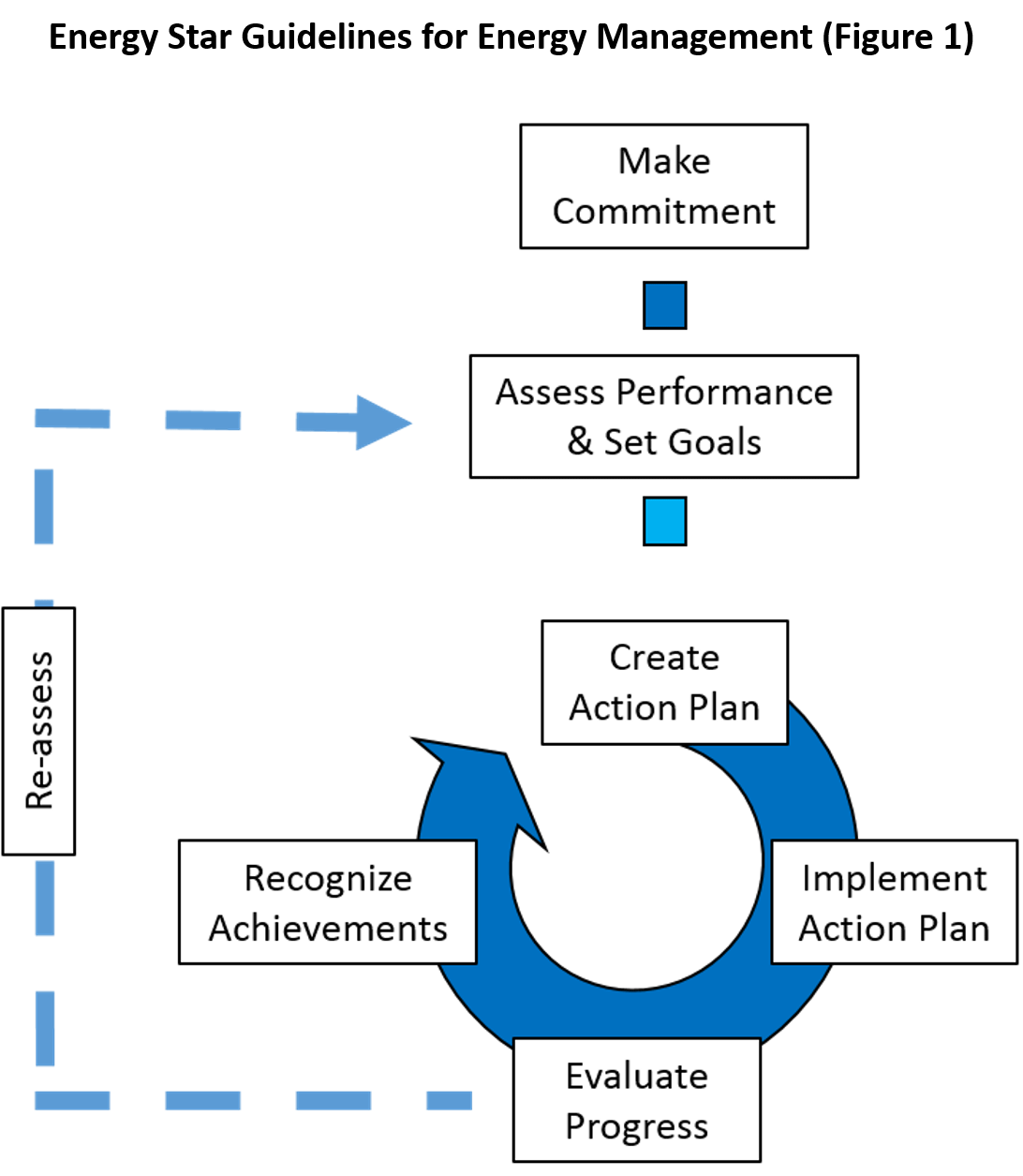Lean & Energy Toolkit: Chapter 2
Integrating Lean, Energy and Greenhouse Gas Management
- Energy In-Line Management
- Guidelines for Energy Management
- Lean Windows of Opportunity for Energy Savings
- To Consider
- Footnotes
- Toolkit Navigation
Energy In-Line Management
Reducing energy and saving money are hand-in-hand principles best understood from a bottom-up approach to energy management. Energy efficiency within a manufacturing company can be approached and addressed while still maintaining product quality and production line reliability. If energy efficiency is managed in a narrow “top-down” approach, energy efficiency projects are sometimes examined on a case-by-case basis without understanding its effects on total productivity and thus may not promote innovative “shopfloor” energy-saving ideas.
While corporate support for energy efficiency in lean manufacturing is critical to the success of the energy-saving techniques, building a strong organizational structure to promote employee accountability and systematizing the program is key. Establish clear goals for energy efficiency, effectively communicate those goals throughout the organizational structure, and track your progress within the company to achieve the best success.
It is the individual responsible for consumption or waste who will be the most innovative. For example, by having a line manager take the lead on the energy efficiency goals, responsibility for improvement is in the hands of the person who owns the consumption. The sustainability manager, who is typically responsible for these activities, cannot obtain significant energy improvements without the help of employees working on the shop floor who best know the equipment and operating procedures.
Guidelines for Energy Management
Pro-actively managing your organization’s energy use is the first step toward efficiency improvements. Energy management is a systematic framework for understanding and identifying energy-related improvement opportunities similar in many ways to the Lean tools that you already use.
Strategically and systematically integrating energy and Lean improvement efforts will enhance their effectiveness and the value they bring to your company. Energy management systems can be tailored to suit your facility’s needs, business opportunities, market risks, and specific goals and targets.
EPA’s ENERGY STAR program’s Guidelines for Energy Management provide an organizational framework for establishing management structures, procedures, and processes that help establish an organizational culture that supports energy efficiency and Lean
approaches. These guidelines have been implemented with great success by many U.S. Companies1.

The ENERGY STAR program has a variety of resources that can help establish an energy management program. For additional information please visit: http://www.energystar.gov.
These guidelines are just one way of managing your organization’s energy use. There are numerous practical ways to consider energy waste and improvement opportunities during Lean implementation. Lean and energy management can work together to increase profit, enhance productivity, and decrease energy consumption through sustained and continual improvements. This toolkit is designed to help your facility achieve these goals.

Lean Windows of Opportunity for Energy Savings
Another reason to coordinate your organizational strategies is to ensure that you are looking for all the improvement opportunities. While significant energy efficiency gains go hand-in-hand with Lean implementation, some energy use and cost reduction opportunities may be left on the table.
This chapter focused primarily on energy efficiency, greenhouse gas management and ensuring that those activities are coordinated with

your Lean efforts. It is important to remember that when implementing Lean, there are critical windows of opportunity for reducing energy use. When a process is being reconfigured as part of a Lean event, a window of opportunity arises for making additional process changes to improve energy efficiency at a lower marginal cost.
Failure to explicitly consider energy use during Lean events may miss several key types of opportunities. These opportunity areas include:
- Upgrade the energy efficiency of equipment (retrofitting). Efficiency upgrades for motors and drives for equipment, air compressors, lighting, and other energy-consuming equipment often have rapid payback periods.
- Switch to a less-polluting fuel source. In some cases, there may be an opportunity to consider switching fuel sources used in a process. For example, it may be more efficient to switch from burning wood scrap to natural gas for generating process heat.
- Design new buildings to be smart energy users. Life-cycle energy costs for new and renovated buildings can be significantly reduced when energy conservation is incorporated into decisions at the design phase.
- Increase the fuel efficiency of your fleet. For some businesses, vehicle fuel costs are a major portion of operating expenses. Consider vehicle fuel efficiency when making fleet purchase and lease decisions.
- Design products to use less energy. If a Lean effort touches on product or service design, consider how the product or service affects customers’ energy use. This can open new opportunities for adding value.
These are just some of the more common opportunities that may be discovered during Lean, energy and greenhouse gas management events. We will discuss them in greater detail in later chapters.
Footnotes
1 GBN Global Business Network, Energy Strategy for the Road Ahead (2007).
Toolkit Navigation
- Contents & Acknowledgements
- Executive Summary
- Preface
- Chapter 1: Introduction
- Chapter 2: Integrating Lean, Energy Efficiency and Greenhouse Gas Management
- Chapter 3: Overview of Energy Use and Lean
- Chapter 4: Energy and Greenhouse Gas Assessment Strategies
- Chapter 5: Energy and Greenhouse Gas Emission Reduction Tools and Strategies
- Chapter 6: Conclusion
- Appendix A: Energy and Greenhouse Gas Management Service Providers, Resources and Tools
- Appendix B: Sector-Focused Energy Reduction and Greenhouse Gas Management Resources
- Appendix C: Energy Conversion Resources and Rules of Thumb for Estimating Energy Cost Savings
